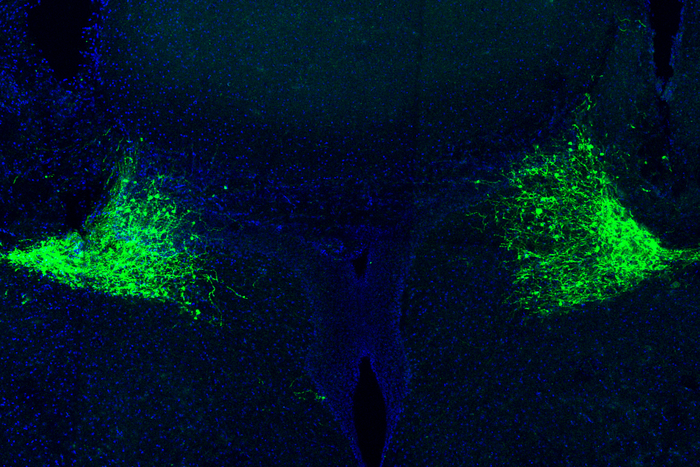Noradrenaline is a neuromodulator that has been linked to arousal and boosting alertness, but can lead to anxiety in large amounts. Unlike neurotransmitters, which enable cell-to-cell communication, neuromodulators are released over large swathes of the brain, allowing them to exert more general effects.
Previous studies of the locus coeruleus (LC), the primary source of noradrenaline in the brain, have shown that it receives input from many parts of the brain and also sends its signals far and wide. New research set out to study noradrenaline’s role in a specific type of learning called reinforcement learning or learning by trial and error. What they found is that, when the brain needs to pay attention to something important, it sends out a burst of noradrenaline. In a study of mice, the team found that one key role of noradrenaline is to help the brain learn from surprising outcomes.
In addition to its role in signaling surprise, the researchers also discovered that noradrenaline helps to stimulate behavior that leads to a reward, particularly in situations where there is uncertainty over whether a reward will be offered.
This work is published in Nature, in the paper, “Spatiotemporal dynamics of noradrenaline during learned behavior.”
“What this work shows is that the locus coeruleus encodes unexpected events and paying attention to those surprising events is crucial for the brain to take stock of its environment,” said Mriganka Sur, PhD, professor of neuroscience in MIT’s department of brain and cognitive sciences, a member of MIT’s Picower Institute for Learning and Memory, and director of the Simons Center for the Social Brain.
The authors noted that noradrenaline-expressing neurons in the LC (LC-NA) activity displays “distinct spatiotemporal dynamics to enable two functions during learned behavior: facilitating task execution and encoding reinforcement to improve performance accuracy.”
For this study, the researchers trained mice to push a lever when they heard a high-frequency tone, but not when they heard a low-frequency tone. When the mice responded correctly to the high-frequency tone, they received water, but if they pushed the lever when they heard a low-frequency tone, they received an unpleasant puff of air.
The mice also learned to push the lever harder when the tones were louder. When the volume was lower, they were more uncertain about whether they should push or not. And, when the researchers inhibited activity of the locus coeruleus, the mice became much more hesitant to push the lever when they heard low volume tones, suggesting that noradrenaline promotes taking a chance on getting a reward in situations where the payoff is uncertain.
“The animal is pushing because it wants a reward, and the locus coeruleus provides critical signals to say, push now, because the reward will come,” Sur said.
The researchers also found that the neurons that generate this noradrenaline signal appear to send most of their output to the motor cortex, which offers more evidence that this signal stimulates the animals to take action.
While that initial burst of noradrenaline appears to stimulate the mice to take action, the researchers also found that a second burst often occurs after the trial is finished. When the mice received an expected reward, these bursts were small. However, when the outcome of the trial was a surprise, the bursts were much larger. For example, when a mouse received a puff of air instead of the reward it was expecting, the locus coeruleus sent out a large burst of noradrenaline.
In subsequent trials, that mouse would be much less likely to push the lever when it was uncertain it would receive a reward. “The animal is constantly adjusting its behavior,” Sur said. “Even though it has already learned the task, it’s adjusting its behavior based on what it has just done.”
The mice also showed bursts of noradrenaline on trials when they received an unexpected reward. These bursts appeared to spread noradrenaline to many parts of the brain, including the prefrontal cortex, where planning and other higher cognitive functions occur.
Optogenetic inactivation of the LC demonstrated that LC-NA activity was causal for both task execution and optimization. The authors noted that targeted recordings of LC-NA neurons using photo-tagging, two-photon micro-endoscopy and two-photon output monitoring showed that transient LC-NA activation preceded behavioral execution and followed reinforcement.
“The surprise-encoding function of the locus coeruleus seems to be much more widespread in the brain, and that may make sense because everything we do is moderated by surprise,” Sur said.
The researchers now plan to explore the possible synergy between noradrenaline and other neuromodulators, especially dopamine, which also responds to unexpected rewards. They also hope to learn more about how the prefrontal cortex stores the short-term memory of the input from the locus coeruleus to help the animals improve their performance in future trials.



